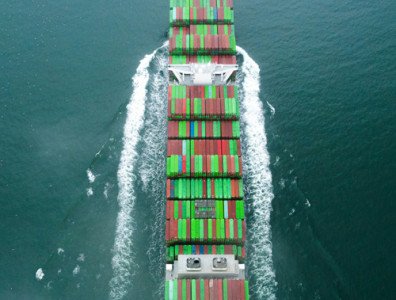Counting nature because nature counts
There’s a saying along the lines of ‘we use nature because it’s valuable, but we lose nature because it’s free’. I have also seen this statement reversed: ‘We use nature because it’s free, but we lose nature because it’s got no value’.
Whichever way around you put it, neither really recognises the value nature has for our businesses and that it’s neither free, nor inexhaustible.
Our dependency on nature rarely features on our balance sheet, yet all sectors are dependent on it one way or another. It may be easier to see how reliant the primary sector, construction or tourism are on our natural resources, but retail, real estate, consumer goods and healthcare delivery for example, all have varying degrees of dependency on nature also.
A recent PwC report Managing nature risks: From understanding to action, explored businesses’ dependency on and exposure to nature risks, and the need to integrate these considerations into their decision-making to enhance resilience, long-term sustainability and value creation. Their report highlighted that over half of global GDP is highly or moderately dependent on nature, but that ultimately, every company depends on nature.
The critical role of nature was reinforced by speakers at an Institute of Directors’ Chapter Zero New Zealand webinar in July, Putting the N in ESG with directors David Carter and Rob Hewett and Chief Executive of Aotearoa Circle Vicki Watson. In particular, it was noted that this is not an ‘add-on’, but something that directors should already be dealing with as part of existing ESG frameworks.
Watson reinforced the findings in Aotearoa Circle’s recent report Protecting New Zealand’s competitive advantage and highlighted that in order to maintain a competitive advantage, New Zealand companies need to ‘know their number’. While this concept has long been associated with climate emissions, it equally applies to nature. Degradation or loss of natural resources can create both physical and transition risks creating vulnerabilities that are increasingly becoming material to companies. She says that while you may be able to decarbonise your portfolios, you can’t de-nature them.
Hewett says that too many companies rely on the ‘eyeometer’ system – calculating using your eyes – but that instead, we need to quantify and verify data to support our decision-making. Increasingly, this information is important when talking to buyers and particularly for global-facing businesses including exporters, companies with international investors and those that rely on international supply chains. For New Zealand export businesses, currently 80 per cent of exports by value go to markets that have mandatory ESG reporting either in place or proposed.
British supermarket chain Tesco, the biggest buyer of New Zealand products in Britain, was one example of a buyer that wants assurance over sustainability of its produce, requesting data on a range of factors including emissions, soil health, and water management. Hewett says it is important to respond to market signals, and that ultimately, the consumer is the regulator. And despite (or perhaps because of) financial pressures on businesses, this was the very time that they needed to be looking at nature and moving to protect their businesses from potential loss of entry to markets.
While Carter acknowledged the risks associated with not responding to these issues, he reinforced the need to look for the opportunities and that understanding your baseline and your impacts can help to identify negative and positive impacts. As a director of Meridian Energy, he highlighted their ‘forever forests’ programme. While it was originally developed to reduce net carbon emissions, they have since realised the valuable role the forests play in pest removal and supporting biodiversity.
In December 2022 New Zealand joined nearly 200 parties to sign the Kunming-Montreal Global Biodiversity Framework. The framework’s four overarching goals to be achieved by 2050 focus on ecosystem and species health, sustainable use and management of biodiversity, equitable sharing of benefits from genetic resources, and adequate financing and resourcing of the framework. One of 23 targets, the agreement commits signatories to protect 30 per cent of land and ocean globally by 2030.
The agreement recognises that climate change and nature/biodiversity are inextricably linked.
Described as the ‘Paris Agreement for Nature’, Aotearoa Circle’s Vicki Watson says while it has received little public attention to date, a lot of work is taking place within government departments and globally, including the EU passing the Nature Restoration Law in June 2024. Considered the first of its kind, the law aims to put measures in place to restore degraded ecosystems – at least 20 per cent of the EU’s land and sea area by 2030. Unlike the Kunming-Montreal agreement, the regulation includes legally binding targets and obligations for nature restoration.
While there may be an economic or balance sheet invisibility of nature, boards need to consider its criticality to their operations, reputation, markets, consumers and financial viability
Considerations for directors:
- Start having the conversations around your board table
- ‘Know your number’ – understand your baseline impacts and dependencies on nature resources – improve your decision-making with good data
- Familiarise yourself with national and global markets and consumer requirements and trends
- Keep director duties front-and-centre and familiarise yourself with potential liabilities
- Understand the role nature can play in climate change mitigation
- Review your risk framework to ensure that you are considering nature impacts and dependencies
- Review your ESG frameworks and set targets to manage nature-related risks and capture opportunities
- Nature doesn’t have boundaries so collaborate with others on measuring, managing and improving



